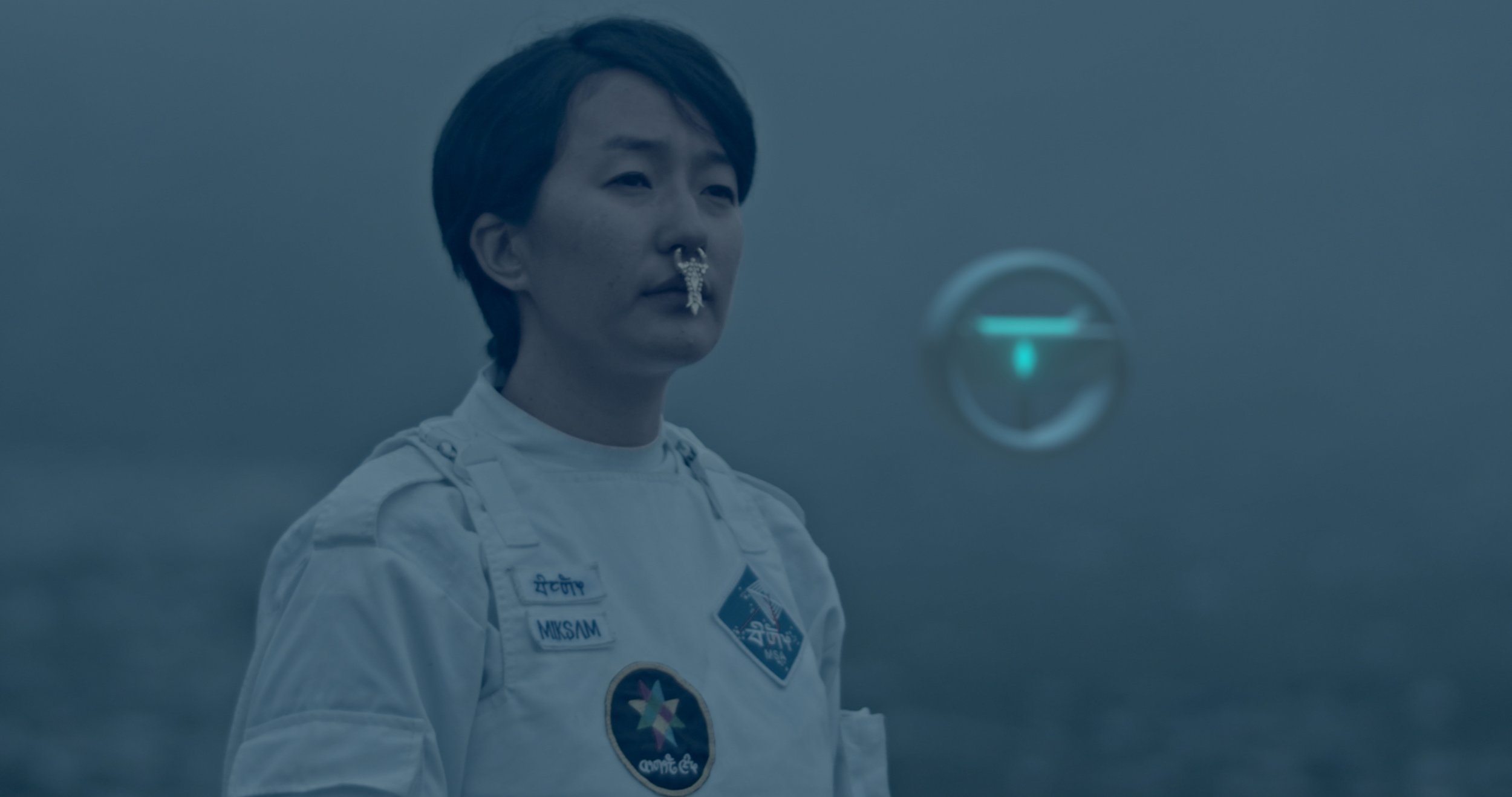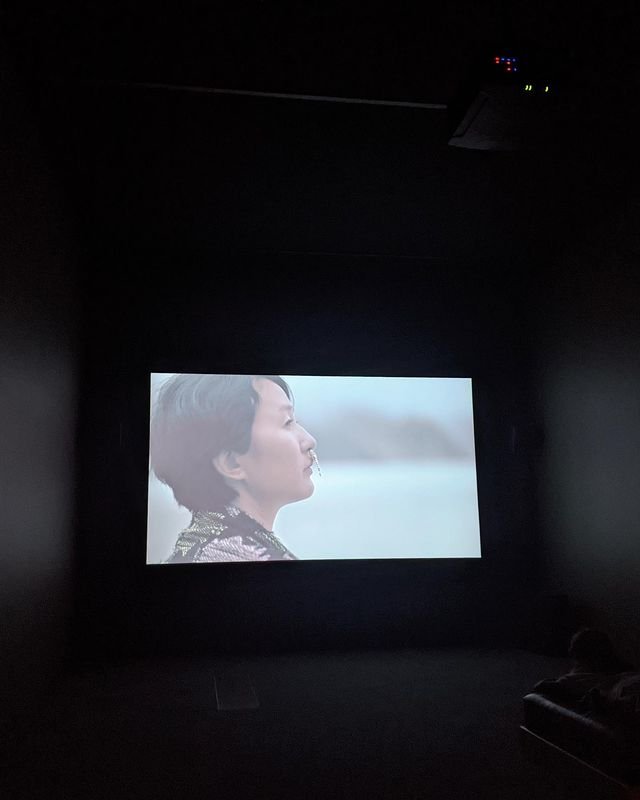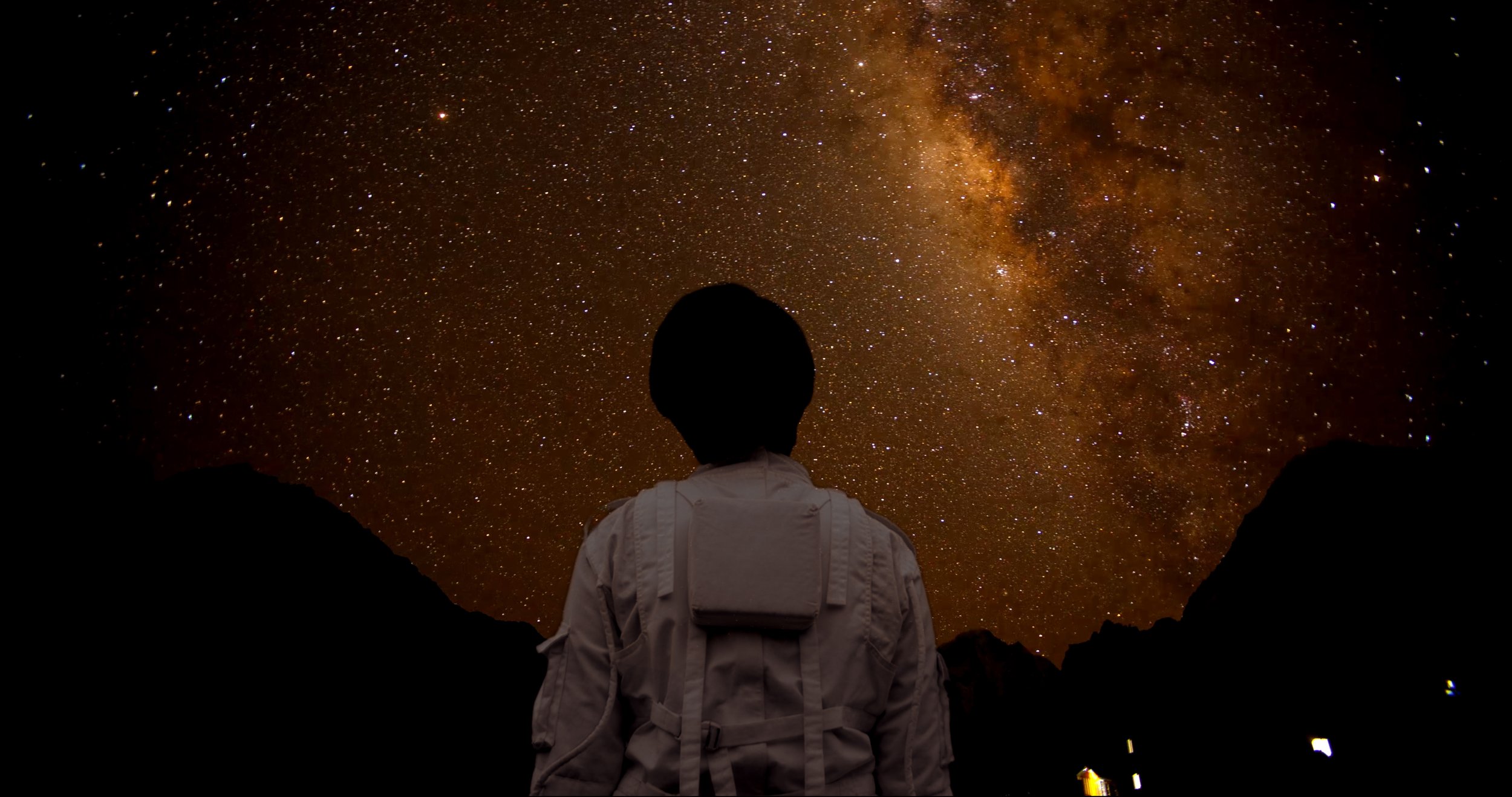Subash Thebe Limbu
Artist Subash Thebe Limbu, MA graduate at Central Saint Martins in London, recently for the first time released his craft of storytelling. With the peculiar lenses of his, the film touches on the roots of Indigenous community of his homeland, Nepal. Inspired by Afrofuturism his film NINGWASUM speaks of the culture, ancient wisdom and knowledge of the universe with a science fiction frame. The film is a contemporary and modern tribute to the imagination for the Indigeneity and their place in the far future of our society. A beautifully hopeful and powerfully artistic act on the history of marginalization of the culture. This piece of craft provides a strong stance on preservation of culture highlighting the importance of heritage if were to have any future.
Let's begin with your upbringing and growing years. What was your environment and indulgence like? What were your main creative and artistic influences ? How has your culture shaped you?
I was born in a small town called Dharan in eastern Nepal. It is home to many Indigenous and non-Indigenous people who moved down from our ancestral hilly places and basically shaped the town to as it is today. After my secondary school, I moved to Kathmandu, the capital city, for higher education. My creative practice and influences back then were quite mediocre to be honest, it was mainly Western arts and music esp. rock. My culture, and community was of course something special which I didn’t realize back then. We have our own language, traditions, dress, food and music; when I think of it now, it has shaped my understanding of belonging, identity, and my worldview. If it was not for my culture, I would be a different man today.
Exploring different mediums of art to work on your film NINGWASUM, how did you find yourself at this stage? Please tell us about your pivotal experiences and inspiring moments.
So for people who don’t know about me and my practice, I am a Yakthung artist from eastern Nepal and I belong to Indigenous Yakthung Nation. Inspired by Afrofuturism and Indigenous Futurism, I have been practicing what I call Adivasi Futurism in recent years. Ningwasum is a Yakthung science fiction documentary shot in Khumbu region, Kathmandu (Newa Nation) and my own Yakthung Nation in Nepal. And although I have made short moving images and video works, Ningwasum is my first feature length film. So film is not my sole medium, in fact I work with sound, music, painting and podcasts as well. Earlier, I used to paint a lot until 6/7 years ago, but then I got tired of its limitations, I mean I still love painting, but I feel that I can express more in other mediums like sound, installations, and film. Also, I was thinking about the commodification of art and was critically observing my own practice. Having said that, I am not saying sound or film (here I am not talking about mainstream film, which is a different story I think) is immune to commodification, it’s just less prone in a sense. I love this medium but I don’t call myself a filmmaker, I am more comfortable with the word you mention as an artist.
My pivotal experience or moments would be, experimenting with sound and electronic music 6/7 years ago. As I mentioned earlier, I was into rock music when I was a teenager, so my experience in music and equipment came in handy when I started experimenting with sound and electronic music as creative practice. I was using recordings of myself reading passages from literature I loved, mainly from Octavia Butler. I loved it. While using Octavia’s lines as a resource material for my work, I realized that I could explore more about social issues that I wanted to through Adivasi Futurism. I always wanted to work on Indigeneity and science fiction but was not quite sure how to approach it, then Afrofuturism inspired me to explore this realm of imagination and speculation of our futures.
The film NINGWASUM is about the place of the Adivasi Community in the far future. You have mentioned that you were inspired by Afrofuturism. It's a fresh perspective yet not unknown. We have found the connection of such wisdom in many sci-fi films; some I can recall are Space is the Place, Afronauts, and Black Panther in mainstream media. What do you think are the tying links to this concept? What makes it so relatable and resonating?
The tying links are the shared history of living under oppression, displacement, racism, colonization and capitalism, and the intense urge to dismantle them by imagining futures where we have agency, liberty, sovereignty, language, culture, ceremonies along with advanced technology. And imagining futures is very crucial for us because “We can’t build what we can’t imagine” as Walidah Imarisha would say.
Speaking of Nepal and the culture, it's one of the most spiritually charged places on the earth. It's considered a portal and a synchronic point of spiritual ascension... How have your experiences on the set been like while shooting the film?
Nepal, like any other place in the world, is not special. The idea that places like Nepal, Tibet are the most spiritually charged places on earth is Western point of view and is problematic. It exoticizes our place where people go through everyday hardships, poverty and oppression. It imagines our places only as ‘sacred’, ‘spiritual’ (we of course have sacred places but our life doesn’t revolve around it) and ‘untouched’ or even Shangri-La, which disregards the effects of internal colonialism, and exploitations of marginalised community for the past two centuries. It was not and is not a place where the society was in harmony, peace, or immersed in spiritualism like hippies of the 70’s used to think. Indigenous communities like ours were systematically marginalized, Dalits were even more oppressed just for being born in a ‘lower caste’ community. We shot in three different Indigenous Nations in Nepal. We filmed mostly in Sherwa Nation, which is home to famous Sherpa people and Everest region. Our second location was Newa Nation, also called Kathmandu, it’s also a place where I have spent half of my life. Our third location was my own Yakthung Nation. So, my experience on set was not something that was new to me, it was home and warm.
I am very eager and interested to know about the culture. Can you please take me through your personal explorative moments? How did you come up with the story? What is it about and what kind of research work it took for you to put it together? And last, what is the meaning behind the name?
Our culture is very rich and is centered around nature. Our indigenous community worships mother nature and if one looks closely, It's more of a materialistic approach to life than spiritual. Well, as an Indigenous person I live my culture.
Ningwasum in our Yakthung (Limbu) language roughly translates as memory. Ningwasum's story is inspired by folktales, oral narratives from our Indigenous community. It is a film that imagines our Indigenous Nation co-existing with fellow marginalized communities and allies in a distant future with our language, culture, dance, ceremony still intact but also has advanced technology and time traveling capacity. It follows two time-travelers, Miksam and Mingsoma (played by Subin Limbu and Shanta Nepali) from a future Indigenous nation who are here in our timeline in a bid to save Miksam’s mother. It explores the notion of time, memory and space and how it shapes reality and the sense of now and how the sense of now could be different for different communities although we might think we live in the same time and space. I had been thinking and researching about it for the last three years. I was speaking with academics, musicians, elders from my Indigenous community and I learned so much from these interactions, and I’m grateful for it.
The music, visuals and narration are very important in any film. Speaking of this, can you please tell us about the kind of style or direction you referred to? What are the films and supporting artists you love and look up to? What do you personally like about them.. Please tell us your few favorite films.
So this film is basically a science fiction documentary, some also call it docufiction or hybrid film and so on. In terms of music, I was lucky enough to collaborate with amazing electronic musician Aisha Devi, her music and scores has made this film a truly unique experience. Along with Aisha, I was fortunate enough to work with musician/rapper Amazumi. Her spoken words and songs have made this film complete. Also, Amazumi and I belong to the same indigenous Yakthung community. And we also have music from Bishwo Shahi who also did the sound mixing for the film. Also, we did a live recording of our traditional drums called Chyabrung for the score. This film was a massive team effort, and many team members played multiple roles in it. Like for eg. Shanta Nepali who played a supporting character called Mingsoma is also the DOP of the project, and Manu Nembang who lent the voice for Miksam also sang traditional tunes for the score. In the Future They Ate from the Finest Porcelain by Larissa Sansour, The Body Remembers When the World Broke Open by Elle-Maija Tailfeathers, Nîpawistamâsowin: We Will Stand Up by Tasha Hubbard, Arrival by Denis Villeneuve are few of my favorite films.
Spiritual science and science fiction very much go hand in hand as a concept.. But I would like to know your struggles and difficulties that you encountered, before, after or in the process of making?
I don’t know about spiritual science but yes there were many challenges making a science fiction documentary. The main one would be the resources to produce visual effects so I intentionally chose to use visual effects that are very simple to make and render, but then again even simple was not simple and I had help in a couple of difficult animations. Also, I am not a filmmaker, so this whole filming and production was a big challenge for me but my team were from film making background and I learned a lot from them.
The accurate and true cultural representation of marginalized communities has always upset and offended many people. Now that be privileged class or governments in some ways. The fight is very much real, taking the example of Native Americans from the Amazon. Your work is a tremendously inspiring piece of art. What do you aim for with this project? What is your message?
Yes, work about marginalized communities by the community does upset a lot of privileged people who do not want to let go of privileges that come at the expense of Indigenous, and marginalized people’s oppression. Taking cue from Afrofuturism and Indigenous Futurism, my aim with this project is about imagining futures that we can aspire to.
Last but not the least, tell us about your next coming projects. What are you currently working on or looking forward to?
I have not started working on any new projects but I am surely looking forward to make some more Adivasi Futurism film or docufiction.
actors : SUBIN LIMBU (as Miksam) & SHANTA NEPALI (as Mingsoma)
voice actors: MANU NEMBANG (as Miksam's voice) & TIRSHANA NEMBANG (as Mingsoma's voice)
director of photography: SHANTA NEPALI
sound and music: AISHA DEVI, AMAZUMI, BISHWO SHAHI, SUBASH THEBE LIMBU
script translation: AMAR TUM YAHANG
spacesuit design: ARATI SUBBA
production artist: SANU BABU NEPALI
camera/drones: MANISH MAHARJAN
still photographer: MANISH TAMANG
current screening :
Asia Pacific Triennial, Queensland Art Gallery | Gallery of Modern Art, Brisbane (4 Dec 2021 - 25 April 2022) - free admission
Kathmandu Triennale 2022, Kathmandu (1 March 2022 - 30 March 2022) - free admission
interview JAGRATI MAHAVER
What to read next














